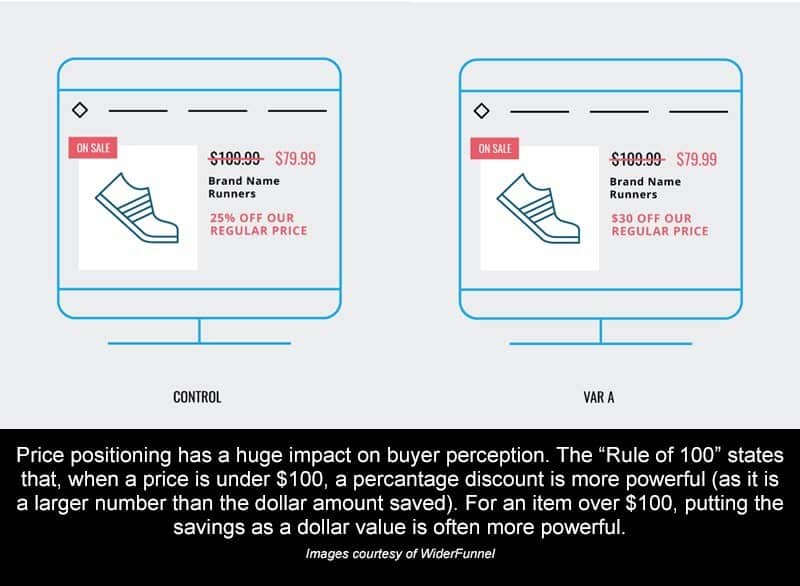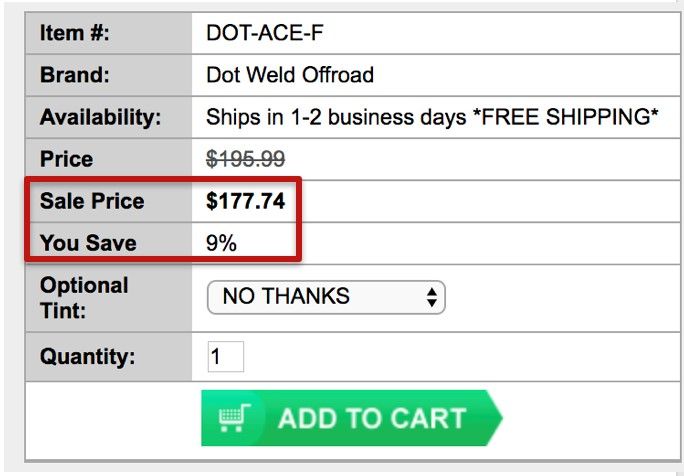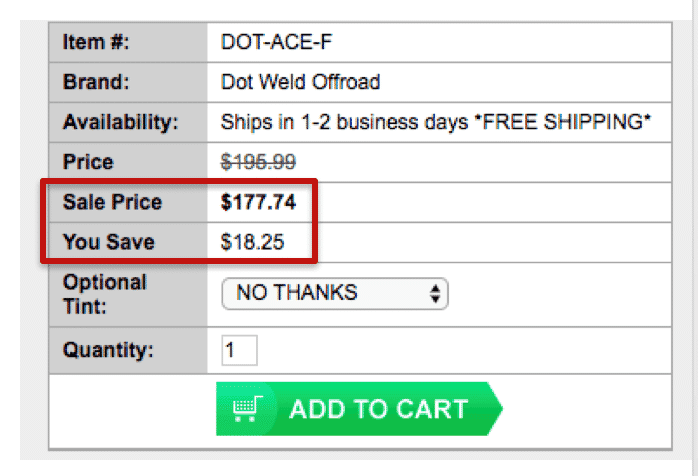by Trevor Anderson • October 4, 2017
From Discount to DISCOUNT! The Secret to Selling Users on…Your Sales
If you work in eCommerce, you know how important deals and promotions are. Your customers face a constant stream of advertising—if you want to stand out from the crowd, you need to convince them that your business offers the best discount around.
However, in many cases, you may not be able to offer “80% off + free shipping” coupons or similar discounts that would make you the obvious best choice. Like most of your competitors, you don’t have a ton of wiggle room, which means you need to make the deals you can offer as compelling as possible.
Fortunately, I’ve got good news for you.
A huge portion of purchase decisions are not made based on the actual discount you give, but by the way that discount is perceived. That’s right, even if the final price is the same, if your potential customer believe that your offer is better, they’ll pick you.
How do you work this magic? Well, it’s actually pretty easy, as long as you keep a simple truth in mind: people don’t like math. Yes, your customers may be bargain hunters, but if you can phrase your deal right, many people won’t bother to do the actual math—they’ll just assume you’re selling things for cheaper than the other guys.
The “Rule of 100”
In his book, Contagious, Jonah Berger (professor at the Wharton School of business) talks about the “Rule of 100” and how phrasing a discount matters just as much as how much the buyer actually saves with the discount.

The rule states that, for products with a price under $100, displaying the discount in terms of a percentage (a relative metric) is more powerful because the percentage will be a larger number than the actual dollars saved with the discount.
For example, if a product costs $10, a $1 discount represents 10% off the price. Getting 10% off may be perceived as a larger discount than the $1 savings (since 10 is bigger than 1).
On the other hand, for products that cost over $100, showing the discount in terms of dollars off the original price (an absolute metric) is more powerful because the dollar amount will be a larger number than the percentage of actual discount.
Real-World Application
At Disruptive, we put the “Rule of 100” into practice with a client that sells high-end parts and accessories for outdoor, all-terrain vehicles. Most of their products have a high price point (over $100), they deal with high order values and their customers are sensitive to sales and promotions.
However, since this client’s margins are fairly slim (typical for this industry), they can’t really afford to do the sorts of mega-sales you see stores like Hobby Lobby or Wal-Mart offer. That being said, they do offer the regular wholesale discount a manufacturer passes on to them on every product (around 10% on most items).
With a fairly fixed discount price like this, we knew we had to make every deal look as compelling as possible.
Originally, the client had been using a basic “percent off” model to advertise their discounts. So, if a part cost $300 and the discount was 10% ($30), the page said “You Save 10%”. If a part cost $3,000 and the discount was 10% ($300), the page still said “You Save 10%”. Unfortunately, this meant that while the actual savings could vary significantly, the perceived savings were identical.
Taking all of that into account, we decided to give the “Rule of 100” a shot. Instead of listing the percent off for products over $100, we would list the actual discount. That way, potential customers could easily see exactly how much they were saving and how good of a deal they were getting.
Setting Up the Test
To test our theory, we created an A/B test in Visual Website Optimizer that would split the traffic into 2 audiences and allow us to compare, side by side, whether displaying the percentage savings or dollar savings would have a bigger impact on cart additions, average order values, and conversion rates.
For this test, we used the original “percentage off the original price” model as our control:

Then, since nearly all products on the site have a price over $100, we created a script that would convert each percentage discount on the site to dollar savings off the original price.

We ran the test for 2 weeks (on par with an average buying cycle) and tested a sample of 40,000 visitors to mitigate the amount of natural variance in the test results.
At the conclusion of the test, this is what we saw when looking at data for the “$ off” variation:
- Cart Visits: +11.61%
- Conversion Rate: +12.62%
- Revenue: +$14,819.52
- Average Order Value: +$22.70
All major metrics leading to and regarding purchases increased, with over 90% statistical significance!
This test has now been implemented into the back end of the site, and will produce an estimated annual revenue lift of over $150,000—all thanks to a simple change in how the client displays discounts!
Putting the “Rule of 100” to Work for You
With the biggest sales season of the year approaching quickly, now is a great time to take a look at how you are describing your discounts. Using the “Rule of 100” could turn a lot of “maybe” visitors into paying customers.
Why? People hate doing math.
When you make the math easy (especially for holiday shoppers in a rush), you make it easy for people to make a purchase without having to cut into your profit margins.
Of course, the “Rule of 100” isn’t the only way to improve the performance of your existing discounts. Whether it’s phrasing discounts differently, offering a rebate, creating an anchor price, setting buyer expectations, or something else, there are many price tests which can move buyers to purchase with greater frequency.
By the way, if you’d like have me take a look at your current discount strategy and give some suggestions, let me know here or in the comments. I’d love to help!
If you’ve tried price testing before, we’d love to hear how it went! Sound off in the comments below, or give us a call to discuss how these strategies have influenced your business.





